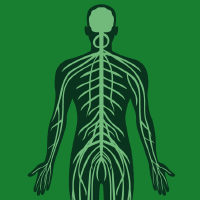Topic Editors

Brain Cancer Stem Cells and Their Microenvironment
Topic Information
Dear Colleagues,
Glioblastoma (GBM) is among the deadliest type of human cancer; it is highly refractory to therapy, with an extremely poor prognosis. Tumor growth, recurrence and intratumoral heterogeneity are sustained by cancer stem cells (CSCs). CSCs drive resistance to pharmacological and radiation therapies, therefore being a key target in GBM. CSCs are located within niches, whose complex microenvironment allows unrestricted proliferation, survival, invasion, heterogeneity and immunosuppression, thus contributing to tumor aggressiveness and resilience. To model the cellular interactions in the context of a tumor microenvironment (TME), CSCs can be cultured in aggregates like organoids or spheroids as specific 3D patient-derived GBM cultures. The challenges, advances, limitations and future perspectives, together with the link with personalized therapies, will be taken into account in this Special Issue. Because GBM proliferation is supported by intense metabolic activity, various mechanisms ensure this high energy supply. In particular, the GSC population is metabolically dynamic, being able to switch between glycolysis and oxidative phosphorylation. On the whole, hypoxia and acidosis not only play a crucial role in promoting metabolic reprogramming in CSCs but also drive therapeutic resistance. Among several mechanisms underlying new vessel formation in GBM, vasculogenic mimicry (VM) supports tumor development, establishment and resistance to antiangiogenic therapies. VM is a TME-sustained process by which new vessel-like structures are generated following the trans-differentiation of CSCs. Mounting evidence indicates that an intense crosstalk between GBM and neural cells exerts an important role in cancer pathogenesis. As a matter of fact, the enriched environment ameliorates the clinical survival of mice with glioma via immunological and BDNF-mediated mechanisms. Notably, different cell types, beyond GBM cells, are known to exert a crucial role in GBM onset, development and aggressiveness. These include, but are not limited to, the tumor associated macrophages/microglial cells (TAM cells), astrocytes, endothelial cells, pericytes, immune cells, etc. In particular, TAM cells greatly contribute to sustaining an immunosuppressive environment. This Special Issue will include both original research articles and reviews. Studies carried out using in vitro, ex vivo and in vivo models are welcome.
Dr. Maria Patrizia Stoppelli
Dr. Luca Colucci-D'Amato
Dr. Francesca Bianchini
Topic Editors
Keywords
- glioblastoma stem cells
- tumor microenvironment
- neuron-glia crosstalk
- extracellular matrix
- metabolic reprogramming
- developmental and regenerative biology
- vasculogenic mimicry
- organoid and 3D culture
- signalling mechanisms
Participating Journals
| Journal Name | Impact Factor | CiteScore | Launched Year | First Decision (median) | APC | |
|---|---|---|---|---|---|---|

Biomolecules
|
4.8 | 9.4 | 2011 | 16.3 Days | CHF 2700 | Submit |

Cancers
|
4.5 | 8.0 | 2009 | 16.3 Days | CHF 2900 | Submit |

Diseases
|
2.9 | 0.8 | 2013 | 18.9 Days | CHF 1800 | Submit |

Neurology International
|
3.2 | 3.7 | 2009 | 22.1 Days | CHF 1600 | Submit |

Biomedicines
|
3.9 | 5.2 | 2013 | 15.3 Days | CHF 2600 | Submit |

MDPI Topics is cooperating with Preprints.org and has built a direct connection between MDPI journals and Preprints.org. Authors are encouraged to enjoy the benefits by posting a preprint at Preprints.org prior to publication:
- Immediately share your ideas ahead of publication and establish your research priority;
- Protect your idea from being stolen with this time-stamped preprint article;
- Enhance the exposure and impact of your research;
- Receive feedback from your peers in advance;
- Have it indexed in Web of Science (Preprint Citation Index), Google Scholar, Crossref, SHARE, PrePubMed, Scilit and Europe PMC.


